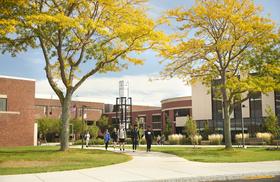Community college enrollment is gaining steam across the country, thanks in part to the current administration's focus on these educational institutions. However, some community colleges are growing faster than others due to the programs they offer and other significant factors. We will look at some of the hotbeds of community college enrollment growth and the key factors impacting the sudden popularity of these institutions.
Reasons for Growth
There are many reasons why community college enrollment continues to grow at an astronomical pace around the country. According to a report in Community College Week, the biggest reason for the growth is the Great Recession of 2007, which put many adults in this country out of work and sent them back to school to get training in a more lucrative profession. It is no secret that an economic slowdown can increase college enrollment. However, the current economic conditions, due to the degree and longevity of the problems, have strained community colleges past the point of being able to adequately serve all the students coming to them for an education.
The Obama Administration has also played a role in the increase in community college student bodies. President Obama has called on this country to produce another five million college graduates by 2020 in response to news that the United States has fallen to 10th among industrialized nations in terms of educational attainment. Colleges have been scrambling to answer the call as federal funding has come in to help some schools boost programs and accommodate a larger student base. Unfortunately, the assistance that has come has not been sufficient to cover the huge number of adults returning to school.
This video offers an overview of Washtenaw Community College.
Fastest Growing Colleges
When you consider the economy to be a major factor in community college growth today, it should be little surprise that some of the fastest-growing institutions are situated in Midwestern states like Ohio and Indiana. This is an area that was hit hard by the recession when automakers and other manufacturing industries felt the brunt of the slowdown and laid off thousands of factory workers who did not have the education necessary to get another job. The top-growing community college between 2008 and 2009, according to a study in Community College Week, was Stark State College of Technology in North Canton, Ohio. This school saw an increase of more than 3,000 students, for a 33 percent increase in enrollment in a single year.
Ivy Tech Community College also saw significant growth over the same academic year in Indiana. This school grew by more than 2,400 students for a 31 percent increase overall. According to a recent report in the News and Tribune, the college expects that number to continue to rise for the spring semester, with about 900 more students enrolling in the school.
Terry Nolot, vice chancellor for enrollment services at Ivy Tech, told the News and Tribune that the economy is a definite factor in the school's larger enrollment numbers. Nolot said, "I think what we've seen since the economy has struggled is students looking for more career options, particularly in the medical fields." Nolot added, "A lot of students start here in hopes of transferring to a traditional school. It's really about what's in the best interest of that student and their educational path."
This video offers a look at Iowa community Colleges.
Dual Purpose
The increase in student enrollment at community colleges is twofold. Some middle-class adults need new career skills to stay competitive in a new global marketplace, as well as lower-income students right out of high school who cannot afford a four-year university right away. The two paths make it difficult for community colleges to adequately address the needs of all their students, particularly at a time when budgets are already tight for schools due to state cutbacks on funding.
Some educational experts predict that serving the needs of the middle class may trump the needs of lower-income students at community colleges in the immediate future. James Jacobs, president of Macomb Community College, wrote in a paper, "These two markets are not incompatible, but serving both strains the community colleges programs and activities. In reality, unless there are strong ideological convictions to serve low-income individuals, coupled with funds, it appears likely that the college will find serving the mission of preserving the middle class will trump the demands of low-income citizens."
Time will tell how the recent growth will impact the community college environment overall. Now, colleges continue to struggle to meet the demands of a growing student body and a changing workforce. This key component to our nation's economic health is continuing to evolve – and it isn't done yet.
Questions? Contact us on Facebook. @communitycollegereview















